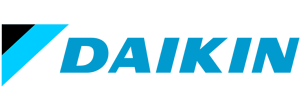You have essentially three ways open to you:
Path 1:
What to do:
Get your IT department or an external developer team to develop custom software applications to digitize and automate the processes.
What to expect:
You will obtain a system that faithfully reflects your definition of the processes to be digitized – if your original requirements were correct, and if the software is complete before your requirements change and if overruns don’t make it cost prohibitive.
It will be possible to maintain and change your software to reflect process changes and improvements – if the developer team is still at hand, and if you can finance it, and if the required changes don’t cause too significant deviations from the original software architecture and if you and your customers can wait long enough for the new version to be tested and debugged.
You will always need a big IT group just to keep the application up-and-running.
Path 2:
What to do:
Utilize commercially available workflow tools. Customize them with heavy use of coding.
What to expect:
You will obtain a system that somewhat meets your definition of the processes to be digitized at a lower risk/cost than “Path 1” – if you can bring together a developer team with the right skills to code within the boundaries of the workflow tool, and if the architectural constraints of the workflow tool do not make implementing your requirements impossible or infeasible.
It will be possible to maintain and change your software to reflect process changes and improvements – if version upgrades in the workflow tool don’t break your current developments, and if the same technology set is still supported by the vendor, and if you don’t need to be to agile in responding to changing business conditions.
You will always need a big IT group just to keep the application up-and-running. Same as “Path 1”.
Path 3:
What to do:
Use next4biz BPM! Design workflows, digital forms, user interfaces, business rules, reports and other artifacts related to your processes. Don’t use coders, as you will not be doing any coding. Do not employ expensive outside resources, all the process know-how you need is within your organization and needs very little training to use the intuitive “drag-drop” style interfaces used for all the design work.
What to expect:
What to expect: You will obtain a system that perfectly aligns with your requirements, without any ifs or buts.
The subscription model will ensure that you never break the bank. Your outstanding financial risk at any time will be marginal.
You will not require external support.
It will be almost too easy to change your solution to support. next4biz BPM will deliver the data to measure processes and pinpoint inefficiencies and bottlenecks. Key users will propose and implement changes, test the changes and smoothly introduce them into production, whenever necessary.
You will not worry about obsolescence unless you allow your business to become obsolete.
You will never need a big IT group just to keep the application up-and-running. Or a small group, come to that. Cloud based next4biz BPM will not necessitate your intervention to deliver 7/24 performance.






